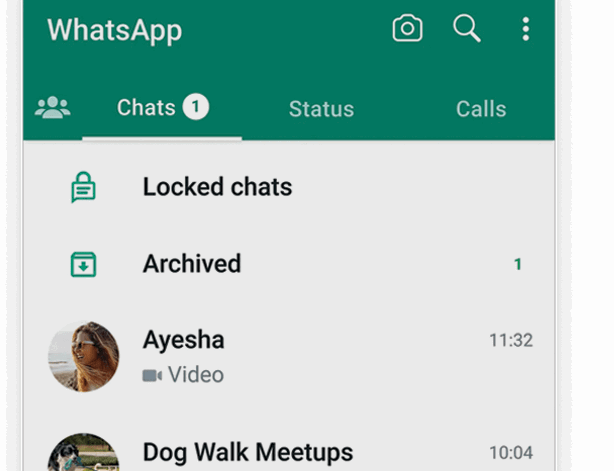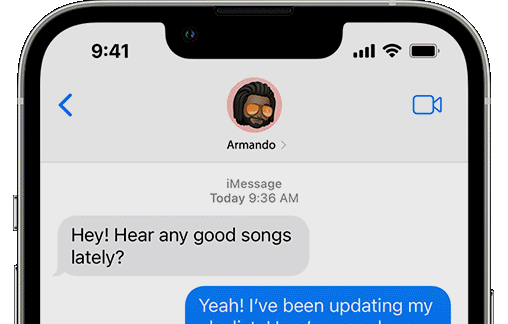Apple improved iMessage with iOS 17—but missed these 5 things
Apple’s iOS 17 operating system for the iPhone has been out for almost a week now. It’s packed with new features, including a new visual way to share your details with others called NameDrop, downloadable offline maps in Apple Maps, and interactive home-screen widgets.
The iPhone Messages app, colloquially known as “iMessage,” also got a number of improvements, including a revamped tools menu to access all of your iMessage apps in one place, audio message transcription, and an improved search filter that helps you find what you’re looking for in past messages.
But while all of these iMessage improvements are welcome, they’re also unsatisfying. Many users were hoping that Apple would finally add some more basic improvements, including features that other popular messaging apps have had for years. Here’s what we’re still waiting for:
An archive function, to keep things tidy
An archive function is one of the most basic features of most messaging apps, including iMessage competitors WhatsApp and Signal. When you archive a chat, you essentially relegate it to a folder full of chats that are segregated from your most-used chat threads.
The ability to archive chats helps keep your main messenger window streamlined and clear of message conversations you don’t use anymore but don’t necessarily want to delete. For example, you have no plans to text your plumber again, but you don’t want to delete the existing thread because he’d sent some helpful tips about how to unblock your toilet. Archiving allows you to get the chat out of your main messages window but still keep it around in case you do need to access it again.
Given how basic a feature archiving is, it’s baffling that Apple hasn’t added archive capabilities to Messages yet.
Locked chats, to provide extra protection from prying eyes
Apple is big on privacy, especially when it comes to messaging. iMessage was one of the first consumer-level end-to-end encrypted messaging apps on the market. That’s why it’s odd that Messages still lacks another privacy feature: locked chats.
Locked chats is a feature in messaging apps including WhatsApp that allows you to add an extra layer of security to individual chats by requiring biometric authentication before someone with your phone can access the chat thread. For example, WhatsApp on iPhone allows you to lock individual chats behind Face ID.
There are times when you may want to let someone else—your kids, for example—chat with someone through your Messages app; perhaps their mom is away for a work trip and they want to text with her. But at the same time, you probably don’t want to risk your kids sending a stray text to your boss. With lockable chats, you can ensure that even innocent slip-ups like this don’t happen.

Bookmark messages, to quickly access them later
iMessage gained a powerful new search option in iOS 17: improved search filters. It makes finding a specific message in a chat easier than ever. However, iMessage still lacks another basic function that WhatsApp has had for years that would make searching, in some cases, obsolete: the ability to bookmark messages.
In other messaging apps, when you bookmark a message, it is tagged—usually with a star. All bookmarked messages are then available in a special section of the app, making it a snap to find important messages, even if they are years old.
Bookmarking a message beats searching for it because bookmarking doesn’t require you to actually remember the exact keywords it might contain. Messages you might want to bookmark could include recipes, people’s home addresses, or the dates they will be away and need you to stop by their house to water their plants.
Disappearing messages, to help outwit abusers
Last year, Apple added the ability to undo a sent message for a small amount of time after the recipient’s phone receives it. However, the company still has yet to implement disappearing messages.
Disappearing messages are messages sent to a recipient that disappear automatically only after the message is viewed by the recipient or after a certain time limit. Given their ephemeral nature, disappearing messages are useful when you want to, say, send your significant other a personal picture you don’t necessarily want to exist forever or transmit a document that might contain the kind of sensitive personal information that you don’t want hanging around in the cloud forever.
Disappearing messages are also very useful for people who are in domestic abuse settings and have their phones checked frequently by their abuser. Implementing disappearing messages can allow victims to more readily and honestly communicate with their friends and family.

A more accurate FaceTime button, to avoid confusion
Compared to the other items on our list, this one is pretty minor. Still, it is a major pain point for many users: the FaceTime call button in the Messages app needs to be redesigned, because people are confused by its icon.
FaceTime is Apple’s audiovisual communications system. It includes FaceTime audio calls and FaceTime video calls. From any iMessage chat thread, you can initiate a FaceTime audio or video call with a few taps, if you decide it’d just be better to talk than to keep texting.
But the FaceTime button in the message thread confuses people. It looks like a video camera, so many people assume that if you tap it, it will start a video call. This leads them to think they can’t make an audio-only call from the message thread. In reality, when you tap the video camera button, a dropdown menu appears, and that is where you can choose to make a video call or an audio call.
A simple tweak that would especially help alleviate confusion would be to separate the FaceTime audio and video buttons at the top of chat threads. Individual buttons would be less confusing and allow people to launch the call of their choice much more easily.
(21)

